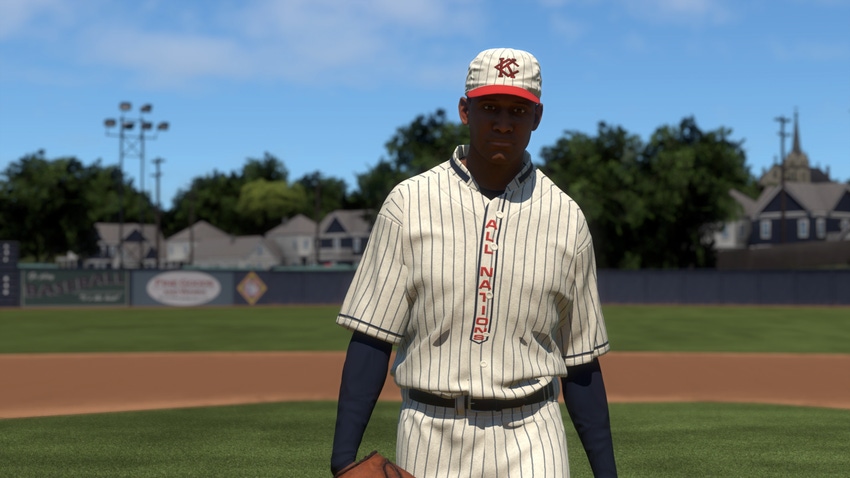Inside the process of bringing the Negro Leagues Storylines to MLB the Show 23, showcasing Black triumph and joy over Black trauma.

For years, Sony’s MLB The Show franchise has been a benchmark not only for baseball video games, but sports games in general. This year’s MLB The Show 23 is doing something it’s never done before, telling the story of Negro Leagues in a new mode called “Storylines.”
The Negro Leagues are an important piece of baseball history and American history. Coming into being around 1920, the Negro Leagues were created to give Black baseball players a space to play ball professionally when they were disallowed from playing in the MLB due to segregation.
While the work of the Black and Latino players in the Negro Leagues is paramount to the success of baseball as a sport, their histories have seldom been celebrated and acknowledged in a major way until recently.
Game Developer sat down with Ramone Russell, the product development communications brand strategist for MLB The Show to learn more about how they went about recreating this important moment in American history in this year’s entry in the franchise.
“The Negro Leagues Storylines is a mode that we've wanted to do for a long time, but could never figure out the right way to do it,” Russell explains. “It was very important to me as a Black man, and for San Diego Studios that we didn’t just throw the athletes from the Negro Leagues into the games.”
Russell firmly believed in the importance of showcasing the history of the Negro Leagues, but he also knew that he and the team would have to educate players on why this time period in American history was vital to understanding baseball today.
“The vast majority of our player base wouldn’t know who Satchel Page or Buck O’Neil are, and they're definitely not going to know Martin Taheebo and John Wesley Donaldson,” Russell explained. “So if we had just thrown them in the game, it would have been not only disrespectful, it would have robbed our community of an opportunity to learn.”
In order to do the Negro Leagues justice, Russell and the team knew they’d need help from experts. They teamed up with the Negro Leagues Baseball Museum, specifically the museum’s president, Bob Kendrick–one of the leading authorities on the Negro Leagues history.

This partnership helped guide the team in the design of Storylines mode and making sure they were telling players stories with care and respect. “Storylines mode features two main experiences,” Russell told us. “There are HBO style mini documentaries for each athlete that are narrated by Bob Kendrick. And then, once players have the context and history of the player, you can play as them during pivotal moments during their time in the Negro Leagues.”
A friction point in depicting the history of the Negro Leagues in MLB The Show was figuring out how to tell this story–which was born out of American segregation and Jim Crow–within the confines of an E-rating.
A key part of that effort for Russell as a Black man was making sure that they were not recreating Black trauma on screen, but instead celebrating Black triumph and joy. “Jim Crow is a horrible chapter in this country’s history. But of that rose stories of triumph over adversity,” Russell explained. “This is a celebration of these amazing men and women, and the power of the human spirit. This story could only happen in America and that’s what we really wanted to focus on.”
As the team worked on Storylines, it became apparent that in order to tell these stories right, some of the control would have to be taken out of the players’ hands. “Video games are all about agency. So if we're talking about the Negro Leagues, and we tell those stories with the control in your hand, what does that look like? Probably not great,” Russell said. “Especially if you're controlling Jackie Robinson in his rookie year on the Dodgers, where banana peels are being thrown on the field, he's getting spiked, and the N-word is being thrown at him. If we did that, we’d be participating in recreating Black trauma.”
So, how do they tell these stories? San Diego Studios leaned on Bob Kendrick to tell the complexities of the Negro Leagues to the players in their short documentary segments, then they could play out iconic moments in Negro League games for each baseball player featured.
Storylines in MLB The Show 23 features eight players: Jackie Robinson, John Donaldson, Martín Dihigo, John Jordan “Buck” O’Neil, Andrew “Rube” Foster, Leroy “Satchel” Paige, Hilton Smith, and Hank Thompson. The line-up is a mixture of well-known athletes and lesser-known athletes that played many different positions on the field. Russell went on to say that these eight players aren’t the only ones they want to focus on. Future seasons of Storylines could continue exploring these stories.
When it comes to the Negro Leagues, Russell believes that an important part of this project is not only educating players about this history, but also inspiring positive change in the world.
For the last three years, for every Collector’s Edition of MLB The Show that’s sold, Sony is donating $1 to a 501c nonprofit. The first two years was the Jackie Robinson Foundation, and this year it’s the Negro Leagues Baseball Museum.
“What's really impactful and important about this is that we've created sustainable philanthropic funding that directly comes from game revenue,” Russell explained. “It's not coming from anywhere else, we're putting skin in the game and it's a blank check that the museum gets to do with that money.”
Russell went on to explain how this ethos is something that they continue exploring through their philanthropic partnerships. The games industry is still a very white industry and many underrepresented communities don’t have the access or knowledge about the myriad careers that exist in game development.
“We worked with the Jackie Robinson Foundation and created specific scholarships for Black youth who want to get a career in gaming. So the money is important, but what's more important is the intentionality and what you do with that money,” Russell told us.
Russell explained that it’s been a very difficult process to find the right fit for the Negro Leagues in MLB The Show but the long nights and countless bits of iteration have payed off. ”It's very difficult to make a video game and it’s even more difficult to make a good one. I’ve learned through this process that you have to ask the right questions to find the answer. And when everybody puts their egos aside, you can do something truly special.”
Read more about:
FeaturesAbout the Author(s)
You May Also Like








